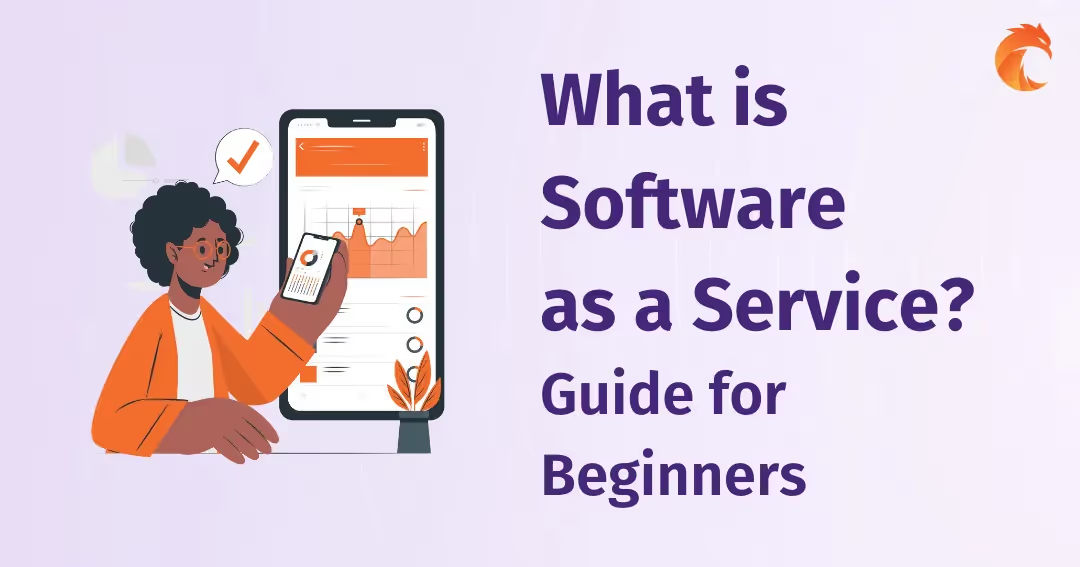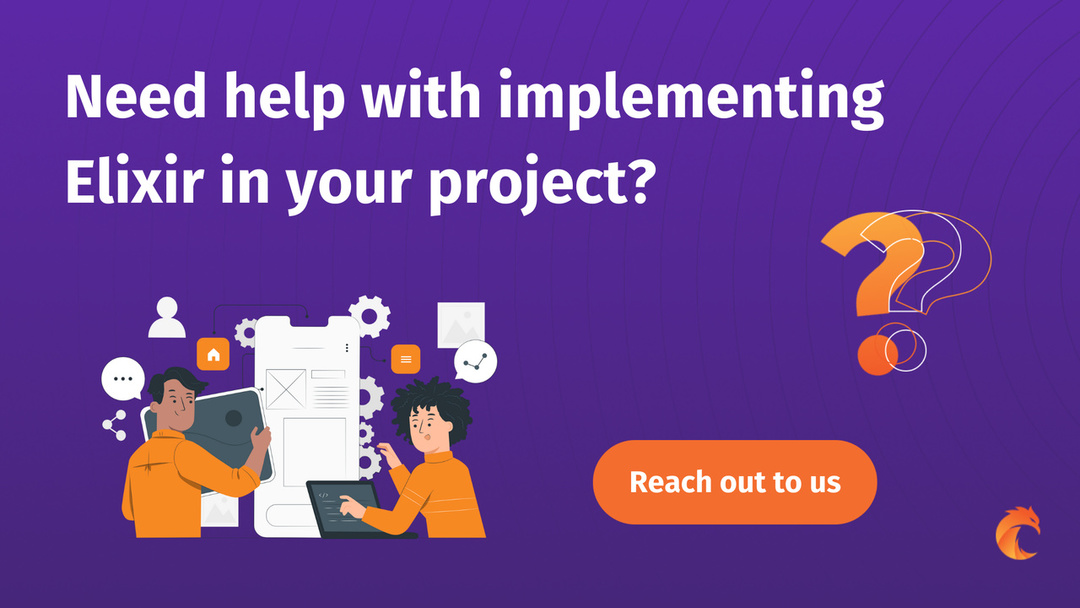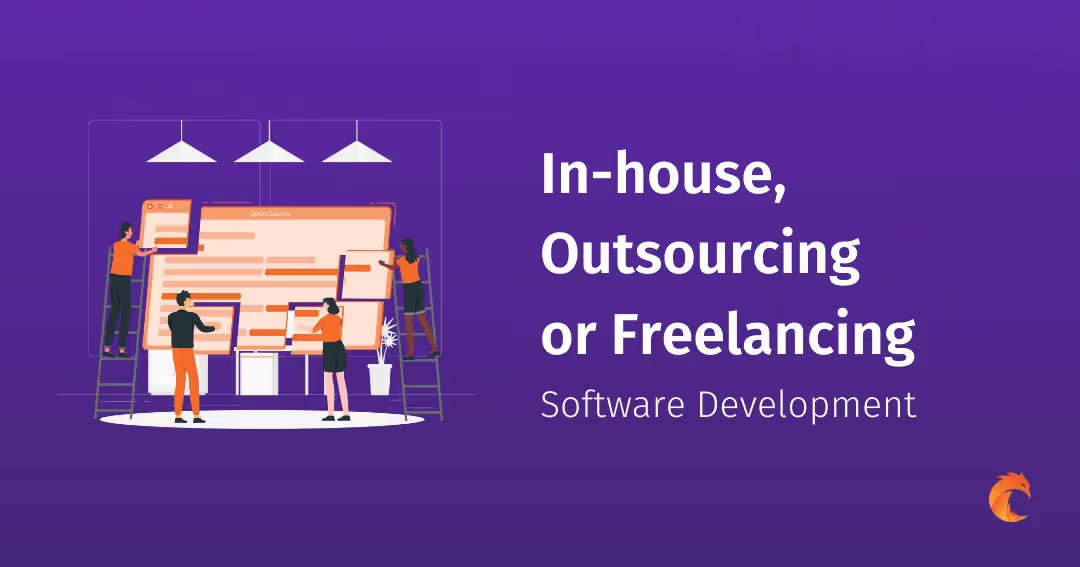What is Software as a Service? Guide for Beginners


Software as a Service (SaaS) provides the most extensive choice for business owners in the cloud market. Why? The site is easy to access - you only need an internet connection and a web browser.
SaaS delivery models require suppliers to solve all technical problems, which means that customers do not need to use their IT department - just master the purchased SaaS tools without needing advanced IT skills. As companies become more and more comfortable using cloud-based digital services, the popularity of SaaS market is growing.
While many users can self-provide SaaS technology, some need third-party integration (API connections) and customization security.
What is SaaS?
Software as a service (SaaS) is a software distribution model in which a third-party provider hosts applications and makes them available to customers over the Internet.
Independent Software Vendors (ISV) may outsource application hosting to an external provider offering cloud computing rental in the SaaS model. For more giant corporations such as Microsoft, the software providers are also the cloud providers.
In the case of SaaS cloud computing, alongside infrastructure as a Service (IaaS) and Platform as a Service (PaaS), it is the best-adopted model. SaaS products range from personal entertainment to advanced business software.
SaaS vendors and examples
SaaS markets offer software solutions that provide many different benefits and services. Several industry leaders are involved in cloud services, including Amazon Web Services (AWS), Microsoft, and Google.
SaaS software products are also varied — they include telecommunications streaming to data analytics software. SaaS applications can be used for essential business applications like email, sales management, customer relationship management (CRM), financial management, HRMS, and billing. Enterprise SaaS services tailored to the particular business area like healthcare and insurance are called vertical SaaS products. SaaS products are generally marketed primarily in a B2B/B2C market or both.
SaaS architecture
SaaS applications are based on a multitenant approach. As opposed to a single-tenant solution, this model is characterized by sharing the whole server infrastructure across its client. Therefore, it can run under one version or configuration for any user.
Though different customers can subscribe to the same cloud instance on the same infrastructure and platform, the data of other customers remain separate. In addition, cloud-based software services can handle maintenance updates and bug fixes faster, easier, and more efficiently by combining multiple tenant architectures into a scalable solution.
How does software as a service work?
SaaS is delivered by cloud services. Software providers host the application and the related data on their server, networking infrastructure, and data centers, or they can be ISV's who use cloud hosting for hosting. It is open to anyone who has an internet connection.
SaaS applications are usually accessible via a browser, the simplest access method. Therefore, companies that use SaaS applications don't have to maintain the software independently.
SaaS security and privacy
Software services are prone in many respects to security risks. For example, the software vendor must address software vulnerability. In addition, the user might run software on unsecured network infrastructures. Therefore, security falls more into the responsibility of a separate vendor or third party.
SaaS vs IaaS vs PaaS
All three models - SaaS, Paas, and IaaS are for cloud providers who deliver their data centers to their customers over the Internet. However, it differs in completeness. SaaS products offer complete application management. It mainly outsources data center resources while PaaS provides a development platform and other tools for its datacenter. In addition, SaaS applications do not require downloading, managing existing systems infrastructure, or operating software.
IaaS: infrastructure including physical data center, firewalls, network security, and servers and storage.
PaaS: infrastructure available under IaaS, operating systems, programming tools, database management, business analytics.
SaaS: infrastructure and services available under IaaS and PaaS models. In addition, hosted applications and client applications.
Read more: IaaS vs PaaS vs SaaS: Differences and Examples

Why is SaaS becoming so popular?
The popularity of online custom applications is significant because of their limited choice. It may take years for the software to integrate with your organization. SaaS is a possibility to use various software programs on demand. Once you find a few options, you can use the trial option to find one that fits your organization.
Advantages of SaaS Technology
SaaS software offers faster development time and faster development cycles than on-premise software. SaaS gives small companies a chance to disrupt existing markets while benefiting from fair SaaS pricing models as a similar cloud service.
SaaS solutions are advantageous in many business situations; they can be easily implemented and are self-provisioned for easy-to-use applications available on public clouds. However, implementing cloud SaaS systems requires a hands-off configuration and vendor training.
Scalability
Using software as a service gives easy flexibility to meet changing business requirements of any company. For example, as your business grows and your capacity and number of users increases, you can readily update your plan with additional licenses.
Size of business
The best SaaS solution will be used mainly by smaller businesses — particularly in the case of a relatively simple process. While SaaS solutions can work for enterprises, some solutions fail at addressing complex requirements of larger organizations without adding configuration.
Savings
SaaS eliminates hardware requirements from the company's business plan. The provider hosts and maintains the database, code, and other server software components. Since SaaS application developers do not need to install or run their applications on the company's servers, there is no need to purchase and install hardware. While on the provider's SaaS side, there is a considerable demand for equipment, as long as it does not use PaaS and IaaS.
Updates
SaaS providers should be careful to keep their platforms updated to avoid slipping out. The web-based software allows you to update software to the latest version of the software quickly. As a result, you won't need to spend money updating the software for all employees each year for an effective and efficient operation.
Examples of Software as a Service
Email messages are a critical SaaS model. Microsoft Outlook is incorporated into business culture, with its accessibility through cloud services changing business. While email remains the most significant way of communicating worldwide, messaging apps like Slack or Microsoft Teams have been creeping in. Another SaaS solution increases capacity by storing and managing information. Software On-Demand helps businesses improve their sales processes and reduce costs.
Cloud software - who owns my SaaS data?
Most often, your data remains in a centralized storage system owned by the provider. However, the Service Level Agreement is the most comprehensive globally; you can obtain this data from any vendor and access this information.
Many SaaS agreements contain built-in and prepaid contingencies that provide access to your data unless the vendor goes bankrupt or becomes insolvent. In addition, many SaaS providers allow you to export the data to local servers at your convenience if needed. There are rare cases where a supplier will demand that your data remain in their possession.
Is my data safe in the cloud?
Software providers know customers are concerned about cloud security but work hard to demonstrate their servers are secure. As a result, many providers use public clouds to deploy and store applications. However, for most companies, data can be at greater risk inside-office.
Gartner believes that by 2025, 80% of cloud security failures will be due to users causing the collapse of the system's security infrastructure.
A SaaS user will never be 100% sure that the server is secured, but it is worth choosing SaaS that inspires confidence in terms of security and describes the security aspect of SaaS tools in their blog posts or FAQ.
What is a private cloud?
Private clouds take the hardware and software that runs a public cloud and store them on-premises. Users can easily access their data using their Web browser. The computing power must be shared by an organization's customers rather than distributed to everyone else. On the contrary to the growing public cloud market, private cloud infrastructure requires maintenance and upkeep.
Setting up a private cloud is expensive and requires investing in the infrastructure necessary to develop an effective and secure cloud environment.
On-premise vs private vs hybrid cloud hosting
Aside from SaaS applications hosted in the public cloud, there can be hybrid and private solutions depending upon the company's need. This can be viewed by analyzing the customer's needs if they need personalization control or protection.
Control & Security
SaaS applications for business generally feature built-in security solutions, e.g., multifactor identification. However, governmental organizations have strict privacy policies which cannot be satisfied with purely web-based services as the security risks could increase if they are compromised.
For these reasons, hybrid and private cloud deployments are a viable alternative, as they provide greater control of the business and regulatory demands and are safer to use.
Functionality & Customisation
Hybrid cloud platforms are available in cloud environments for business users to use. Various components are designed for tailoring the product to the specific needs of a particular business.
The future of SaaS
Cloud computing is likely to accelerate as companies create new products and technologies to meet demand. The dominant artificial intelligence in the logistics, transportation, and retail sectors seems to be widely used for SaaS applications. As technology advances, SaaS models can grow as well. However, finished products are still essential.
Ready to scale your business with the right tech partner?
Related posts
Dive deeper into this topic with these related posts
You might also like
Discover more content from this category
A new application or website is something your company needs to evolve. First, consider whether creating an in-house team or hiring professionals is better for your business.
Building minimum viable products (MVPs) has become an essential component of a successful product strategy. Learn how an MVP can be created by 11 real business examples that successfully nailed MVPs.
As the CEO of an international company or a budding start-up, you are faced with the challenges. It is a responsible decision that will affect the development of your company, but also its economic status and market position.





